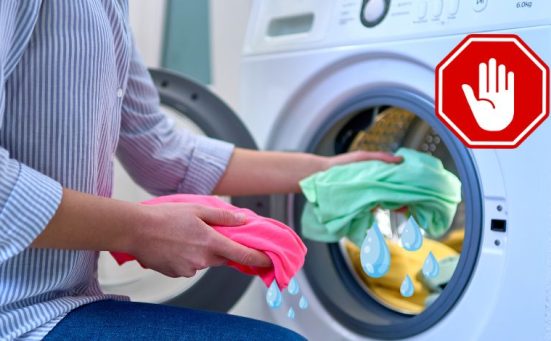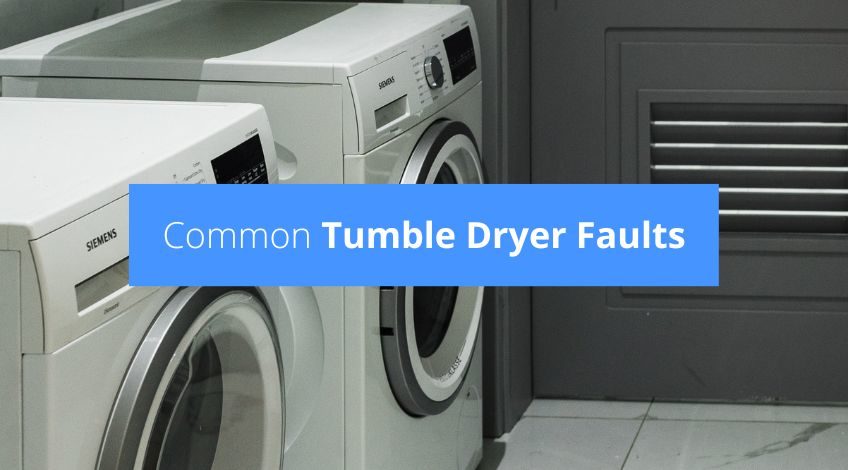
Common Tumble Dryer Faults (and what to do about them)
Generally speaking, the tumble dryer is one of the most reliable appliances in most homes. But like any electrical appliance tumble dryers have the capacity to develop a fault. If your tumble dryer has stopped working or has developed a fault, keep reading as we have identified the most common tumble dryer faults and in many cases how to repair them safely.
As with all electrical appliances we recommend only taking them apart if you are confident in your abilities to repair it safely. If you feel you are not competent, we strongly advise you to call in an expert.
Let’s now look at the most common tumble dryer faults and how to fix them. In some cases the repair is simply a maintenance issue whilst in others you will need at least a basic comprehension of electrical wiring and systems. If you are not confident or competent we strongly advise you to call in an expert. Before removing any parts or panels from your appliance, always ensure it has been removed from the electricity supply by unplugging it or flicking the power breaker.
Common Tumble Dryer Problems And Solutions
Below is a list of common faults and solutions applicable to most makes and models of tumble dryers. This should be used as a quick guide and not as a specific reference for your particular appliance.
| Fault | Solution |
|---|---|
| Nothing Working | Check the machine is plugged in, mains switched on and the socket is working correctly. |
| Appliance powers up but doesn’t start | 1) Check the door is closed correctly, check and replace the door switch if necessary.2) It could also be the timer switch, reset the timer and try again, if it still doesn’t work, either; replace the timer switch or contact an engineer. |
| Drum doesn’t turn | 1) It could be; Faulty drum motor or drum belt snapped; call an engineer.2) It could also be; the timer switch or the reverse timer switch is faulty; reset the timer and retry, if it still doesn’t work call an engineer. |
| Machine working, but fails to dry clothes | 1) It could be a faulty thermostat or a faulty heating element; replace thermostat or heating element or call an engineer.2) It could also be the thermal cut out switch activated; Allow 15 minutes to pass, then try again if it still doesn’t work call an engineer. |
| Clothes taking far longer to dry | 1) Check the lint filter and vent pipe (if applicable) or check the water tank and empty if necessary or see if the condenser is clogged (if applicable)2) Or it could be the heating element is faulty, heat control switch faulty, thermostat faulty; call an engineer.3) Another problem could be that the machine is overloaded; check the handbook for correct load levels or over wet clothes; ensure the clothes are spun dry before tumbling. |
| Clothes burn or over hot | Faulty thermostat or faulty thermal cut off switch; call an engineer. |
| Clothes overly creased or tangled | Faulty reverse timer or faulty timer switch; turn appliance off and on again or reset timer if it’s still the same, replace parts or call an engineer. |
| Excessive noise during machine operation | 1) Foreign objects in the drum (keys, coins, screws etc…) remove object(s)2) Or it could be the bearings could be worn, the drive belt could have slipped, the rollers might be worn; call an engineer. |
Tumble Dryer Only Produces Cold Air
This is one of the most common faults on tumble dryers and there are a number of reasons for this. The most common are:-
- A build up of fluff or lint in the filter or door seal
- Covered or blocked ventilation grills
- Mixed clothing loads (different fabrics take different amounts of time to dry)
- Kinked or blocked vent hose (vented machines)
- Condenser blocked with fluff (Condenser machines)
- Full water tank (condenser machines)
It could be that the heater has overheated and tripped the safety shut off switch. Not all tumble dryers have a safety shut off switch but if it does, they are usually located on the rear of the tumble dryer on the back panel. It will be a red button, and to reset it, just press it, if it resets it will click. If your appliance doesn’t have a reset switch you will need to call an engineer to reset your machine.
Thermostat
If your tumble dryer doesn’t have a reset button, and it stops producing heat, it’s likely that the thermostat or Thermal Overload Cutout (TOC) has tripped. If this is the case, the thermostats are the size of a small coin usually and can be located by removing the back panel after ensuring the power supply is disconnected. It is easy to check if it is the thermostat (or TOC) using a multimeter to test the resistance and replace if necessary.
Heating Element
If the thermostat is working correctly, check the heating element that the thermostat is attached to. It looks like a large metal box that’s attached to the tumble dryer by wires. Check the heating element with a multimeter and replace if necessary.
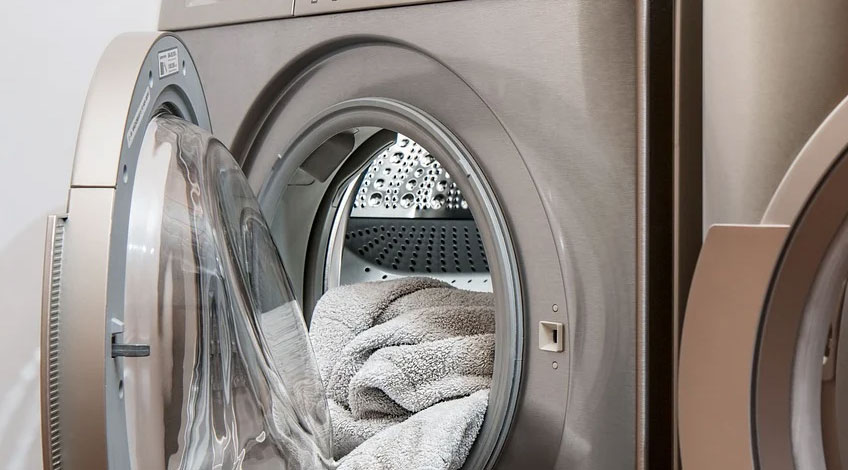
What Causes The Tumble Dryer To Overheat?
At the end of the drying cycle, a cooling fan operates to cool the heating element. If you open the tumble dryer door before the cycle is finished, this can cause the thermostat or TOC to trip the cut out switch. So we suggest always waiting for the machine to completely finish before opening the door.
Door Filters
There are filters on the tumble dryer door which allow air to circulate through the dryer, they can easily become blocked with lint etc… These should be cleared regularly to prevent overheating and tripping the safety switch.
Blocked Drum
Small pieces of lint etc… Can get caught in the holes in the tumble dryer’s drum which will also restrict air flow through the machine and cause the safety switch to trip.
Condenser Box
It is also possible to get lint or fluff trapped in the condenser box which can also cause the same problem. Clean the condenser box out regularly under running water.
Tumble Dryer Drum Not Turning
The way clothes dry in a tumble dryer relies on two main things, heat and the tumbling motion which allows the heat to permeate all areas. If the drum is not turning, the clothes will not dry properly.
Drive Belt
To check if the belt is the issue simply move the drum by hand and check if it’s easier or harder than usual to move it. If it’s easier then the belt has probably snapped, if it’s harder it’s possible the belt has become tangled.
The motor turns the drive belt which is connected to the drum and turns it. If the drive belt has snapped the drum won’t turn. To access the belt you will need to remove the side and possibly the front panel of the appliance. Obviously ensure the appliance is removed from the mains and if you are in any doubt of your ability, call an expert.
The new belt will fit tightly and could cause you some problems in fitting. It is possible to temporarily stretch the new belt by heating it with a hairdryer until it can be manipulated into position, it will shrink as it cools. Some machines require a special tool to attach the new belt which can be ordered online, it’s called a tumble dryer drive belt fitter. However these drive belt fitters can cost as much as a new vented tumble dryer and so this should be considered before running to too much expense.
Start Capacitor
If the belt is not the cause of the problem, it could be that the start capacitor is faulty. This can be checked by spinning the drum by hand and quickly closing the dryer’s door to start the machine. Once the drum stops it will not start again if it is the start capacitor that’s causing the problem. It is possible to replace the start capacitor yourself but be warned, unless the machine is disconnected from the power supply you are highly likely to receive an electric shock from the capacitor.
Tumble Dryer Motor
If it’s neither the drive belt or the start capacitor it’s likely to be the motor that’s faulty and will need replacing.
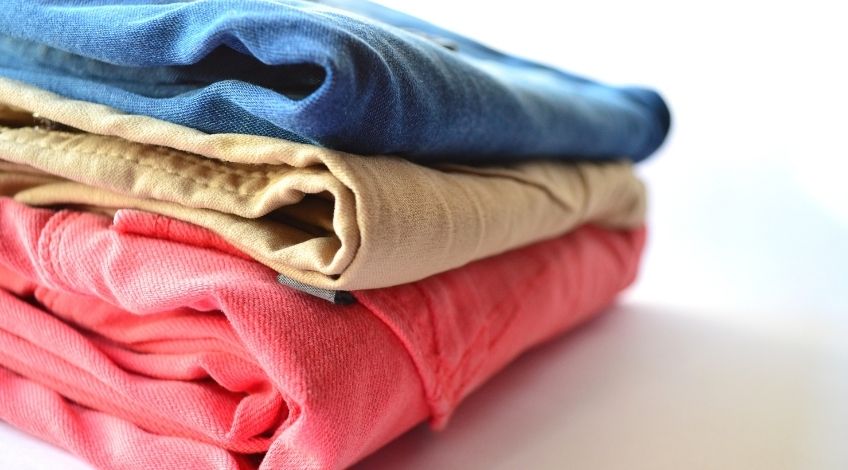
Clothes Not Drying Properly In The Tumble Dryer
Let’s look at some of the most common reasons for the tumble dryer to not properly dry your clothes.
Tumble Dryer Not Operating At All
If your tumble dryer won’t start it could be a number of things, some simple and some slightly more involved. Firstly, check if the appliance is plugged into a mains socket and the power is switched on (this sounds obvious but you’d be surprised at how often this is the problem).
It could be the fuse has blown in the plug. If this is the case it might be time to call an expert, fuses are there as safety devices to prevent anything more serious happening.
Check that the dryer door is correctly closed as this could prevent the machine from operating.
If all else is OK check the socket that your machine is plugged into. This is easily done by plugging another appliance into it and seeing if it works correctly.
Tumble Dryer Only Producing Cold Air
This is likely to be caused by the problems identified at the top of this article which are:-
- Full lint filter
- Ventilation grills covered or blocked
- Mixed fabric loads
- Kinked or blocked ventilation hose (vented machines)
- Full water tank (condenser machines)
- Condenser covered with fluff (condenser machines)
Tumble Dryer Continuously Tripping The Breaker
The most common cause for this fault is the condenser box is blocked with fluff or lint or other debris from the clothes. When the condenser box becomes partially blocked it can’t condense the moist, steamy air into water efficiently. This causes the inside of the dryer to become too damp which can cause enough of an electrical fault to trip the residual current device (RCD) and blow the fuse.
Excessive Drum Noise
If your tumble dryer starts to make a noise around the drum area it can be worrying and should definitely not be ignored. It’s often something simple but you should stop the machine and investigate.
Items Falling Out Of Pockets
This problem is nearly always caused by items left in the pockets of clothing falling out and rattling around the drum. The most common objects are keys and coins but children often pick up shiny stones etc… Always check the pockets on all items of clothing before tumble drying them.
Uneven Surface
If the dryer is making a noise due to vibration during the spinning process it could be due to the machine being sited on an uneven surface. You can adjust the feet on your tumble dryer until it sits level. Use a spirit level or a clear bowl of water to check how level the machine is.
Problems With The Drum
Over time the drum itself could start to make a noise, if it’s continuous all the time the drum is turning, it could be the drum itself rubbing against something inside the machine. Open the door and check to see if the drum is out of shape at all. Look for dents or other marks that could indicate something is touching the drum internally.
Alternately, if the tumble dryer is noisy when in use and the whole machine is shaking, rumbling and/or vibrating, it could be the drum bearings are worn and need replacing.
If there is a squeaking noise coming from the dryer when it’s in operation it could be the tension pulley wheels are wearing out. This is especially prevalent on older or reconditioned dryers.
Similarly, a high pitched whining or screaming noise could indicate that the bearings on the motor are wearing out.
If the dryer is making a grinding noise it is often just a foreign object like a screw, key, belt buckle or similar scraping on the side of the drum. But it could be indicative of worn rollers.
Worn Rollers
These small wheels are attached to the outside of the drum and assist in the spinning process. If they become worn, they will grind when the drum spins.
Drive Belt Slipped
If the drive belt slips it could create a grinding noise as the drum spins.
Worn Gliders
On some models there is a plastic or nylon glider that sits on the outer rims of the drum to prevent it coming into contact with the metal body casing when spinning. If these gliders become worn, the drum will rub on the metal cabinet and cause a grinding sound. The gliders can be replaced, they are purchased as a kit of two (one for each rim of the drum) and it’s best to replace both at the same time.
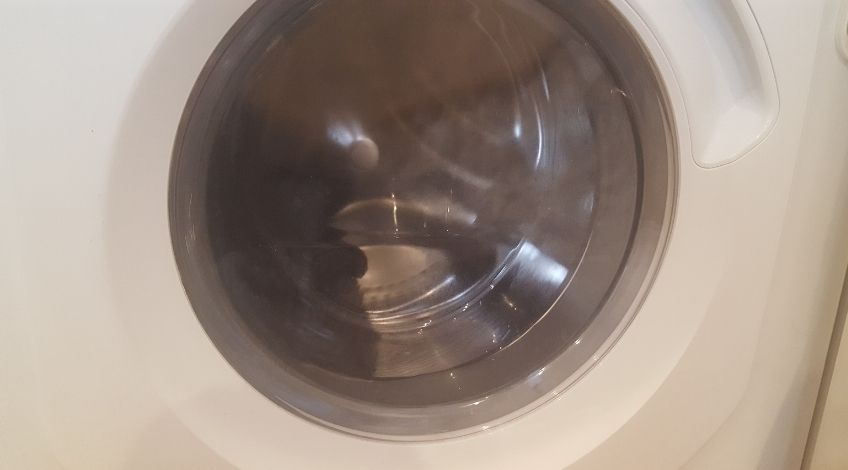
Tumble Dryer Won’t Start
The most common reason for a tumble dryer not to start, is a faulty door switch which often wears out due to normal wear and tear but can be the victim of rough treatment like slamming the door etc… These are relatively easy to replace and parts can be obtained online for around 5 to 10 pounds depending on the make and model of your appliance.
It could also be that the thermal fuse has blown. If this is the case it is usually a sign of something more serious like a defective thermostat which will need addressing by an engineer to check exactly what has caused the problem.
Still Need Help? Consider Booking A Repair
If you do call in an expert we suggest you ask for a quote on the cost of the repair and then apply the 50/50 test.
The 50/50 Test
After receiving a quote for the repair of your tumble dryer you should apply the 50/50 test to work out whether it’s worth repairing. How this works is by looking at the quote and assessing whether the cost of repair is more than 50% of the cost of a new machine. As well as assessing whether your appliance is going to last for another 50% of its life expectancy. The estimated life expectancy of a tumble dryer is 10-15 years.
If the answer is no then we recommend investing your money into a new appliance. If yes then go ahead with the repair.
Frequently Asked Questions
Tumble dryers are worth repairing, as long as the repair costs at least 50% less than the cost of a new appliance and your model has lots of years expected to last (based on its age and life expectancy).
The average life expectancy of a tumble dryer is anywhere between 10 and 15 years.
Not all tumble dryers have a reset button. If yours doesn’t have a reset button you will need to call an engineer to reset it. If your appliance is still under warranty, it might not cost you anything to get it reset.
If your tumble dryer suddenly takes far longer to dry clothes it is probably caused by a buildup of fluff or lint in the filter which is located on the rim of the door. If your machine is a condenser dryer it could be lint has blocked the condenser or even the water tank is full.
As dryers tend to start wearing out their component parts after 10 years, it is probably better to replace it than have it repaired (depending on the cost of the repair).
Soaking wet clothes could potentially damage your dryer due to the excessive amount of weight. Too much weight can cause problems with the drum’s bearings. Your dryer will have a weight limit and soaking wet clothes will weigh more due to the water content. You should always ensure clothes have been spun before placing them in the dryer.
Also, follow us on Pinterest ...



